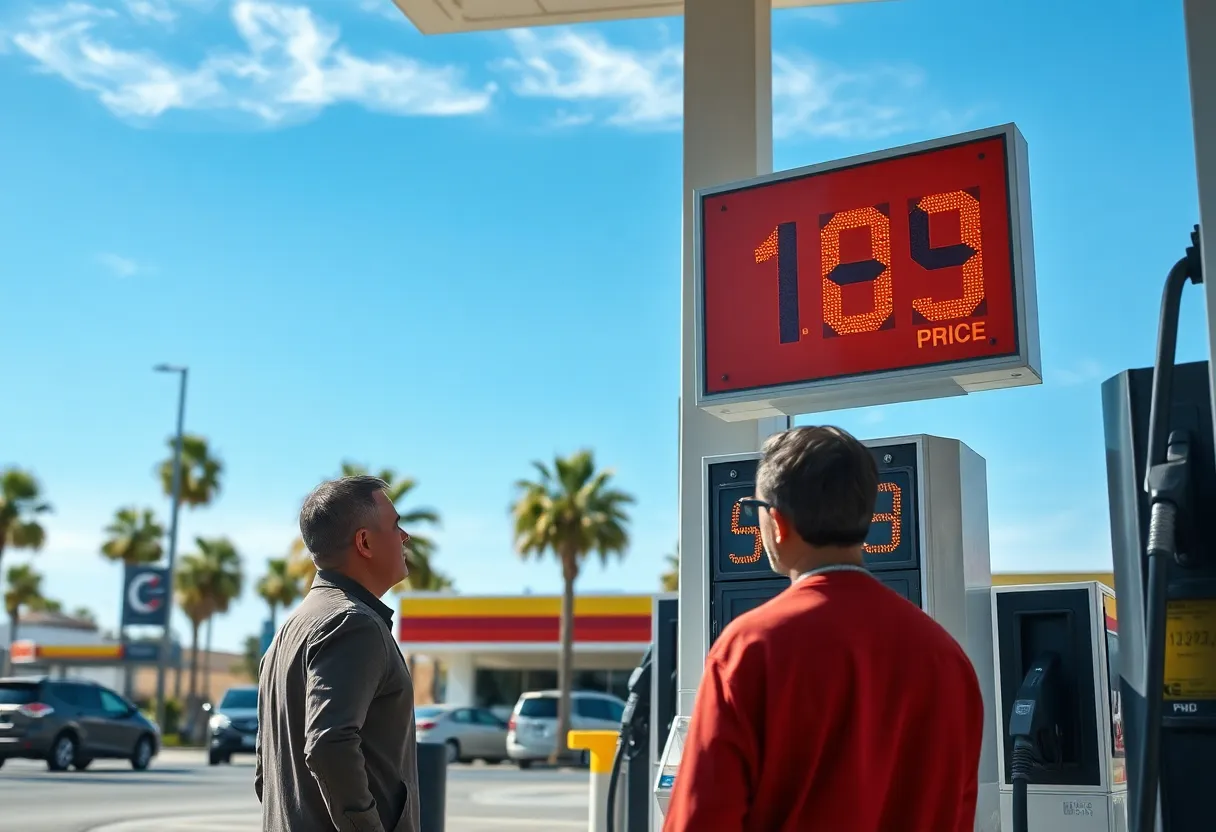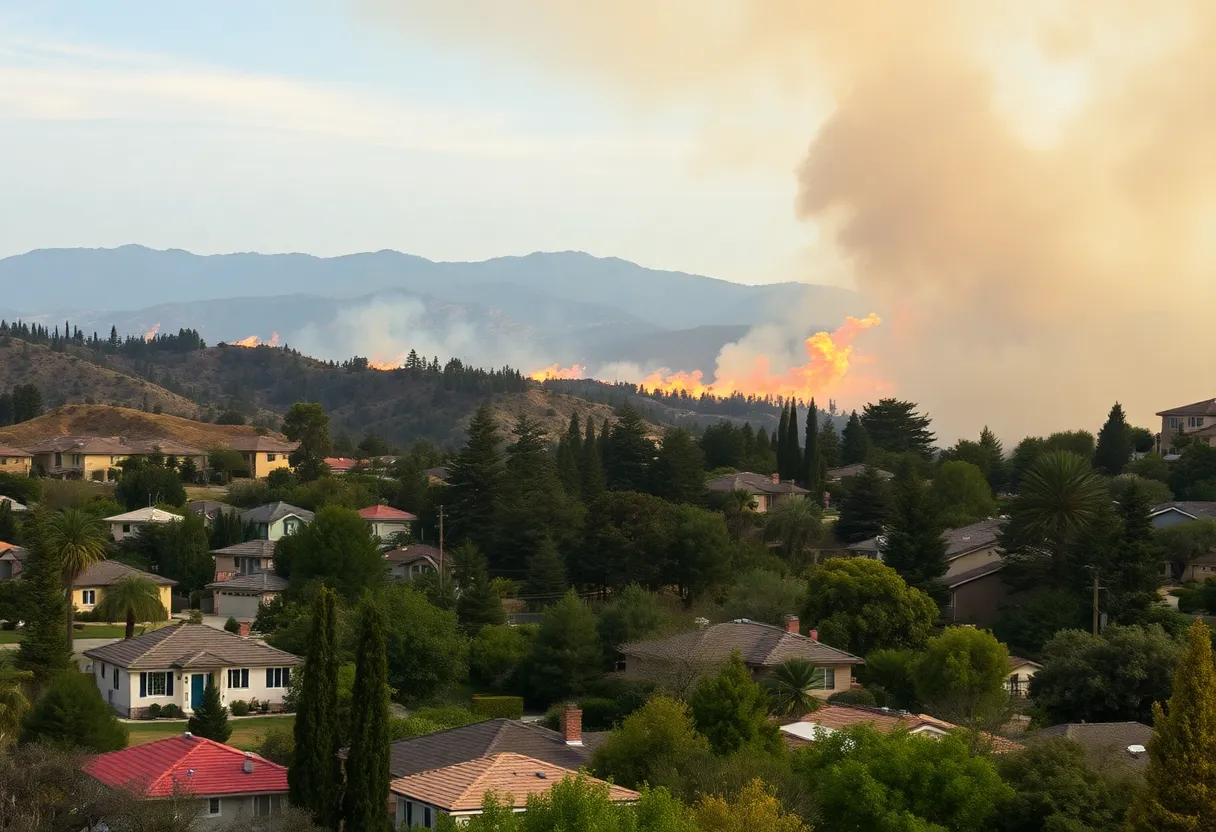News Summary
California is bracing for a possible surge in gas prices, projected to increase by 75% by 2026 due to the impending closures of major refineries. The Phillips 66 and Valero refineries, responsible for 20% of the state’s gas production, are set to halt operations, which could drive prices to $8.43 per gallon. Alongside rising fuel costs, job losses and economic challenges are anticipated, as California faces a $73 billion budget deficit. Governor Gavin Newsom’s administration must address these issues to stabilize the fuel supply and mitigate the economic fallout.
California is facing a potential surge in gas prices by 75% by the end of 2026, triggered by the anticipated closures of two major refineries. The Phillips 66 refinery located in Los Angeles is projected to close by the end of 2025, followed by the Valero refinery in Benicia, which is set to cease operations by April 2026. These closures could significantly impact the state’s fuel supply and economic landscape.
Together, the Phillips 66 and Valero refineries account for around 20% of California’s local gas production. Without these facilities operational, analysts estimate that the price of gasoline could skyrocket to approximately $8.43 per gallon. In the short term, the closure of Phillips 66 alone could push prices to around $6.43 per gallon, a noticeable increase over current rates.
The ramifications of these closures extend beyond just fuel costs. Approximately 1,300 jobs directly linked to the refineries are at risk. Given the job multiplier effect of 2.3, total potential job losses in the surrounding communities could reach nearly 3,000 statewide. This looming job crisis coincides with additional challenges in California, including a substantial budget deficit of $73 billion and $1.6 trillion in state and local government debt.
Impact of Regulatory Changes
The refineries’ closures can largely be attributed to stringent regulations, particularly those established by the Low Carbon Fuel Standard, which are known to impose considerable operational costs. Experts suggest that modifications to this standard may mitigate future refinery closures by easing some regulatory burdens.
As of now, California only produces 23.7% of its petroleum needs, showing a significant increase in reliance on imported oil over the years. Historical data highlights that in 1982, the state met an impressive 62% of its petroleum needs through in-state production. More recently, California’s contribution to total U.S. crude production has plummeted to just 2.5% to 2.7% in recent years.
Projected Gasoline Deficit
The economic repercussions of these refinery shutdowns could be severe. Economists predict a gasoline deficit that could range between 6.6 million to 13.1 million gallons per day. Such a decrease in gasoline production is expected to negatively impact California’s GDP, affordability, and personal income levels.
The administration of Governor Gavin Newsom faces mounting pressure to proactively address the impending fuel supply crisis. Although regulatory measures have been implemented to enhance fuel supply stability, their long-term effectiveness remains uncertain. Further declines in gasoline production could exacerbate economic difficulties within a state already grappling with significant deficits.
Current Gas Prices and Comparisons
As of April, California’s average gas price was reported at $4.918, notably higher than the national average of $3.260. The gap emphasizes the challenges local refiners face due to high regulatory costs, which inflate gasoline prices relative to other states. These financial pressures contribute to the ongoing discussions regarding refinery operations and fuel supply in California.
In summary, the projected closures of the Phillips 66 and Valero refineries could have far-reaching implications for California’s economy, job market, and the price residents pay at the pump. As the state officials navigate these turbulent waters, the focus remains on finding solutions to stabilize fuel supply and mitigate the potential fallout from these refinery shutdowns.
Deeper Dive: News & Info About This Topic
- California Globe: California facing $8.43 gallon gas, a 75% increase as refineries close
- KMPH: California gas prices may surge 75% by 2026 following closure of two major refineries
- Desert Sun: Why is California gas so expensive and why prices may spike
- Audacy: Bay Area refinery fire could send CA gas prices to $6 or $7 a gallon, expert
- Forbes: California gas prices — the state makes more money than refiners

Author: Anaheim Staff Writer
The Anaheim Staff Writer represents the experienced team at HEREAnaheim.com, your go-to source for actionable local news and information in Anaheim, Orange County, and beyond. Specializing in "news you can use," we cover essential topics like product reviews for personal and business needs, local business directories, politics, real estate trends, neighborhood insights, and state news affecting the area—with deep expertise drawn from years of dedicated reporting and strong community input, including local press releases and business updates. We deliver top reporting on high-value events such as major conventions at the Anaheim Convention Center, including NAMM and VidCon, exciting games at Angel Stadium and Honda Center, and developments at Disneyland Resort Our coverage extends to key organizations like the Anaheim Chamber of Commerce and Visit Anaheim, plus leading businesses in hospitality, entertainment, and innovation that power the local economy As part of the broader HERE network, including HERECostaMesa.com, HEREHuntingtonBeach.com, HERESantaAna.com, and HERELosAngeles.com, we provide comprehensive, credible insights into Southern California's dynamic landscape.




